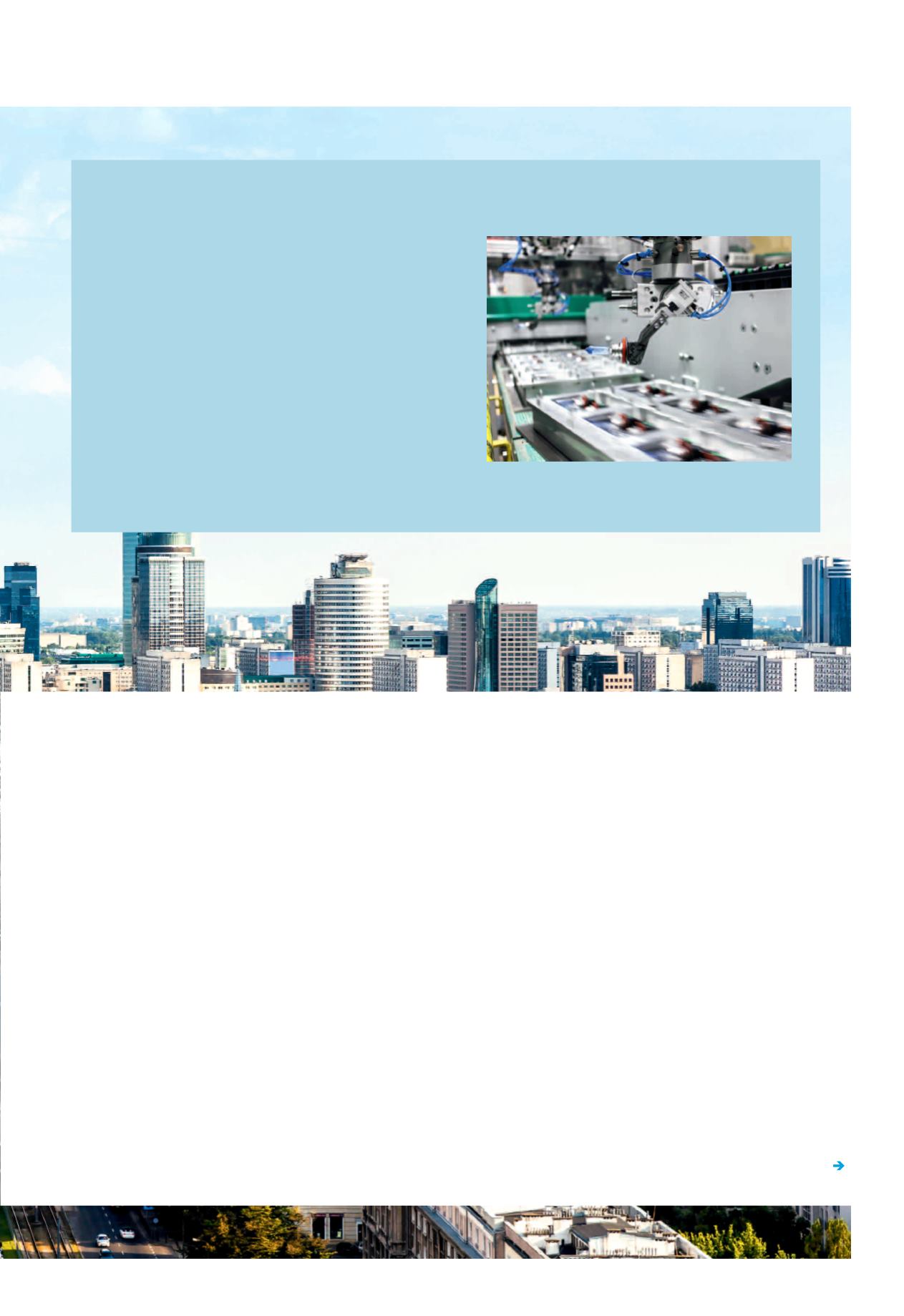

Customised solutions
The Application Centre of Festo Poland develops and tests
over 90 customised solutions every year, including a highly
dynamic handling system for the packaging of car lights.
The automation solution for an international company that
supplies products to numerous industries, including the
automotive, electrical and electronics sectors, is based on
two Festo tripods EXPT with robotic functionality for move-
ment in three dimensions. The handling system also exem-
plifies precision in movement and positioning combined
with a high dynamic response of up to 150 picks per minute.
The replaceable grippers of the two tripods support the
picking and placing of eight different types of lights. In add-
ition to the robotic controller CMXR with the operator unit
CDPX, the system is equipped with electric slides EGSL.
Highly dynamic:
tripods type EXPT ensure a fast
packaging process for car lights.
Photo: © shotshop.com
opportunities presented by the shift from a communist planned
economy to a free market economy following the fall of the Iron
Curtain in 1989.
Changing history, key personalities
Despite being a forward-looking country, Poland still maintains
strong links to its past. On 3 May 1791, Poland’s first constitution
was drafted – the first democratic constitution to be enacted in
Europe. Time and again, Poles have demonstrated their desire
for freedom. Polish aristocrat Tadeusz Kościuszko fought in the
American Civil War between 1777 and 1783 on the side of George
Washington and was committed to the abolition of slavery. During
the Second World War, the Polish underground movement suc-
cessfully smuggled a German Enigma machine to Britain, making
an important contribution to the Allied victory in 1945. The inde-
pendent trade union “Solidarność” (Solidarity) played a pivotal
role in the collapse of communism in Eastern Europe. Poles are
proud of the great historical figures that their country has pro-
duced, including world-renowned composer and pianist Frédéric
Chopin and mathematician and astronomer Nicolaus Copernicus.
Warsaw native Marie Curie became the first woman to win the
Nobel Prize for Physics, which she was awarded along with her
husband, Pierre Curie, in 1903. She also won the Nobel Prize for
Chemistry in 1911. Pope John Paul II had a lasting effect on the
Catholic Church during his 26-year papacy. And Adam Małysz was
one of the best ski jumpers of all time. Art and culture, science
and history, sport and religion are areas that have traditionally
defined the image of Poland and the Poles, and continue to
do so today.
Centres of progress
Nowhere are the signs of the success of modern Poland more
evident than they are in the capital Warsaw/Warszawa. More than
250,000 companies are based in Warsaw, and the city’s unem-
ployment rate of 1.9 per cent is among the lowest in Europe.
Kraków is one of Poland’s most beautiful cities, and was largely
unscathed by the impact of the Second World War. Its beautifully
preserved medieval city centre has earned it the names “Florence
of the North” or the “Rome of Poland”. In recent years, Wrocław
has emerged as an important cultural centre. In 2016, the city was
named “European Capital of Culture”. Centres such as Gdańsk,
Łódź, Katowice, Poznań and Szczecin also attract many visitors
from home and abroad.
Mushrooms – the nation’s passion
Poland has a diverse landscape, ranging from the sandy beaches
of the North Sea coastline to the Masurian Lake District with its
countless lakes, and the peaks of the Carpathian Mountains, of
which the Tatras are the highest. The large number of natural
parks – over 20 in total – reflects Poland’s closeness to nature.
1.2017
trends in automation
Synergies
22
–
23


















